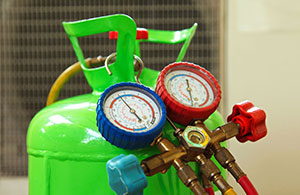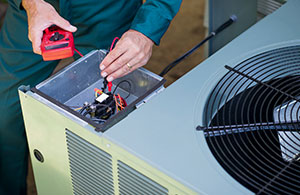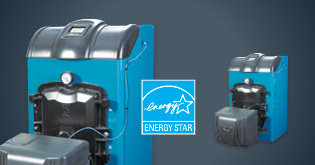- My Account:
- Sign In
- Register
- Make Payment

R22 (refrigerant) replacement.
 R22 is a refrigerant used in most air conditioning systems installed before 2010 which is currently being phased out of production because it contribute to ozone depletion and global warming. If your AC system was installed during this period, you
will need to replace the R22 to comply with new environmental regulations.
R22 is a refrigerant used in most air conditioning systems installed before 2010 which is currently being phased out of production because it contribute to ozone depletion and global warming. If your AC system was installed during this period, you
will need to replace the R22 to comply with new environmental regulations.
Region Energy has EPA-certified technicians that can take care of your R22 replacement, with options including R22 draining. And we can answer any questions you have about the R22 phase out and the initiative to improve our environment.
For more information about R22 (Refrigerant) replacement, please call 973.366.3100 today.
FAQs: Air Conditioning Systems - R22 Phase-Out
What is R22?
R22 refrigerant has been used for years in central AC systems, heat pumps, mini-splits, car AC systems, and other refrigeration equipment. It helps absorb and remove heat from a space. You might have heard of R22 already; it also goes by its chemical name, hydrochlorofluorocarbon 22 (HCFC 22).
Why is R22 being phased out?
R22 is a greenhouse gas that contributes to the depletion of Earth’s ozone layer, and to global warming. The ozone absorbs harmful UV radiation, so it is important to pinpoint and eliminate greenhouse gases whenever possible. The R22 phase out is occurring in accordance with the U.S. Clean Air Act and the Montreal Protocol on Substances that Deplete the Ozone Layer.
How do I know if my air conditioning system uses R22?
Any air conditioner installed before 2010 probably uses R22. Check the nameplate on the unit to find out what type of refrigerant it uses.
When is the R22 phase out taking place?
R22 will be completely phased out by January 1, 2020. No new or imported R22 will be allowed in the U.S. after this date, and technicians can only use recycled, reclaimed, or previously produced R22 to service equipment.
What are some safer alternatives to R22?
All air conditioners and cooling equipment currently being manufactured use hydro-fluorocarbon (HFC) refrigerants. Most common is R410A, but others include R134a, R407C, and R407A. These refrigerants are just as effective as R22, but has no ozone depleting characteristics and relatively low Global Warming Potential (GWP).
If my system runs on R22, what should I do? What are my R22 replacement options?
There is no need to replace your existing system if it is operating normally, but if it does need servicing, you have multiple options.
- Continue using R22: R22 can be used to service existing air conditioners, but supplies are getting more limited and more expensive as the refrigerant is harder to source. Make sure your AC technician repairs damaged refrigerant lines rather than just topping off leaky units. Be aware that older AC models that use R22 may not be running at peak efficiency, and the cost of R22 will continue to increase as it becomes less available.
- Use a “drop-in” refrigerant: There are refrigerants known as “drop-ins” that can be used instead of R22. Most work just fine but will result in decreases in reliability and performance. You should only use drop-ins for quick, temporary repairs and have a long-term replacement plan in mind.
- Install a new system: To save money on future repairs and help out the environment, consider replacing your AC system, especially if the system is already 10 (or more) years old. New systems use environmentally friendly refrigerants like R410s, and increase the resale value of your home!
Can R410A be used in an R22 air conditioner?
No, units that use R22 are not compatible with R-410 refrigerants. Using the wrong refrigerant can result in the failure of your air conditioning system.
How do I dispose of R22 safely?
You can’t simply take your R22 air conditioner to the curb and expect the garbage truck to come pick it up. The easiest, and safest, way to dispose of R22 is to have a professional technician drain the refrigerant lines. Region’s EPA-certified technicians can perform this service while installing your new air conditioning system. Also, be sure NOT to cut refrigerant lines, or remove the compressor before the refrigerant is drained. This is illegal under the Clean Air Act and EPA regulations.
Contact Region today if you have other questions, or for more information about R22 replacement or other AC services. We always strive to find the most cost-effective, environmentally friendly option for you.

View the latest offers on central air conditioning service and equipment.



.jpg?sfvrsn=ba81b4e4_1)
.jpg?sfvrsn=43a0195a_3)